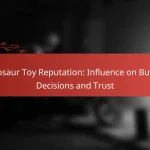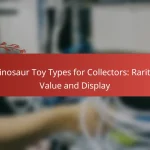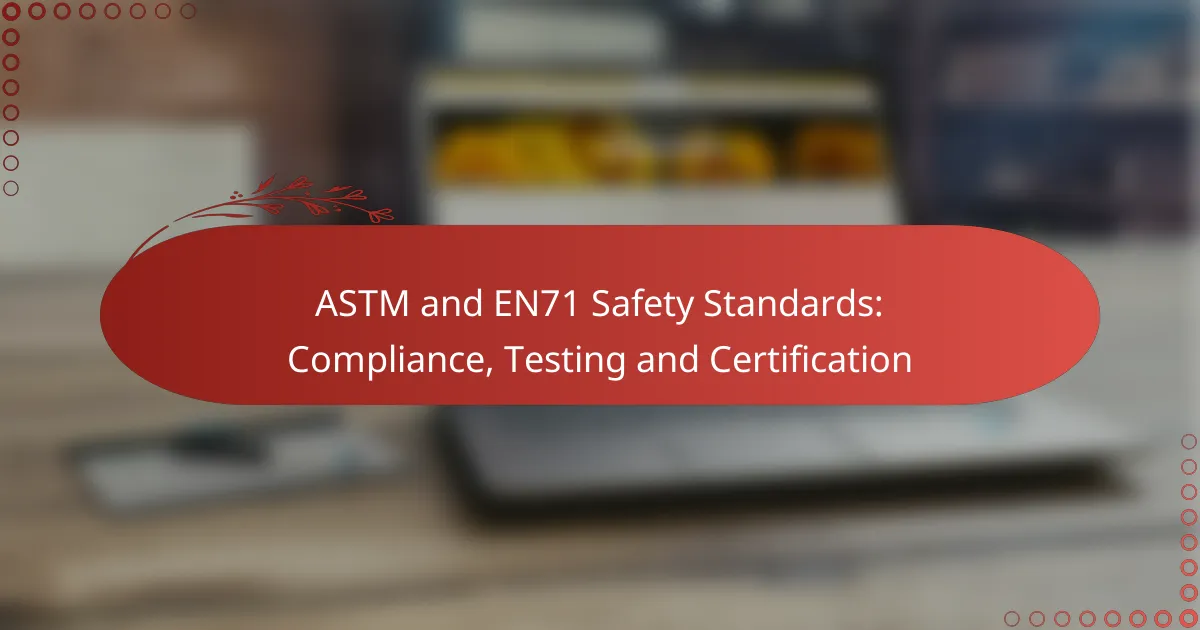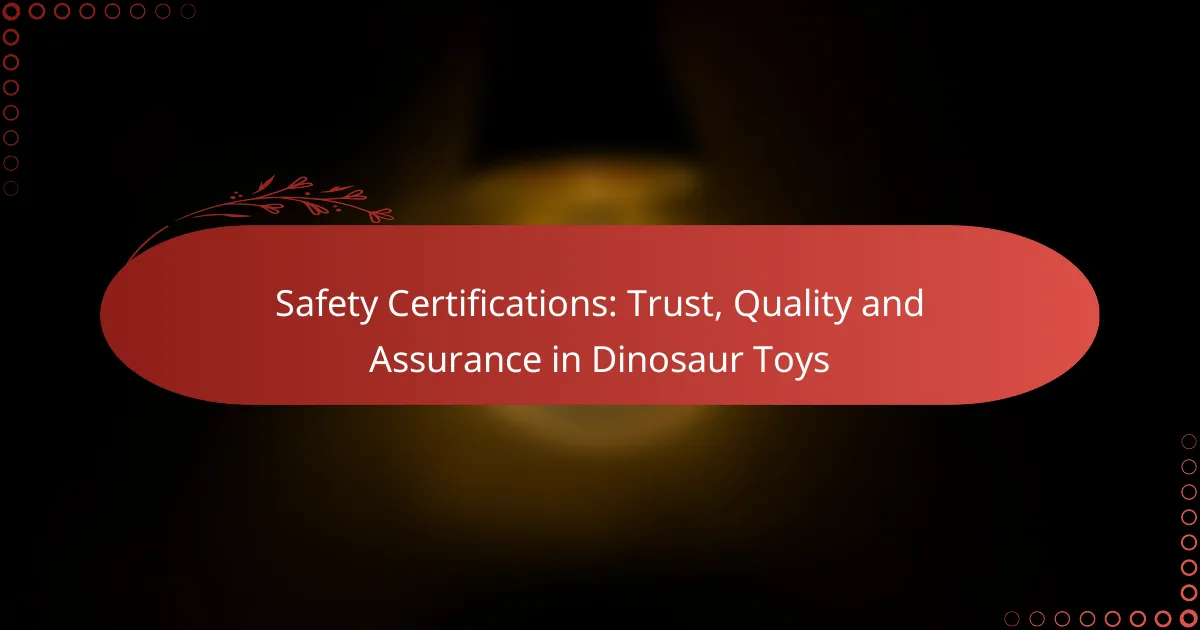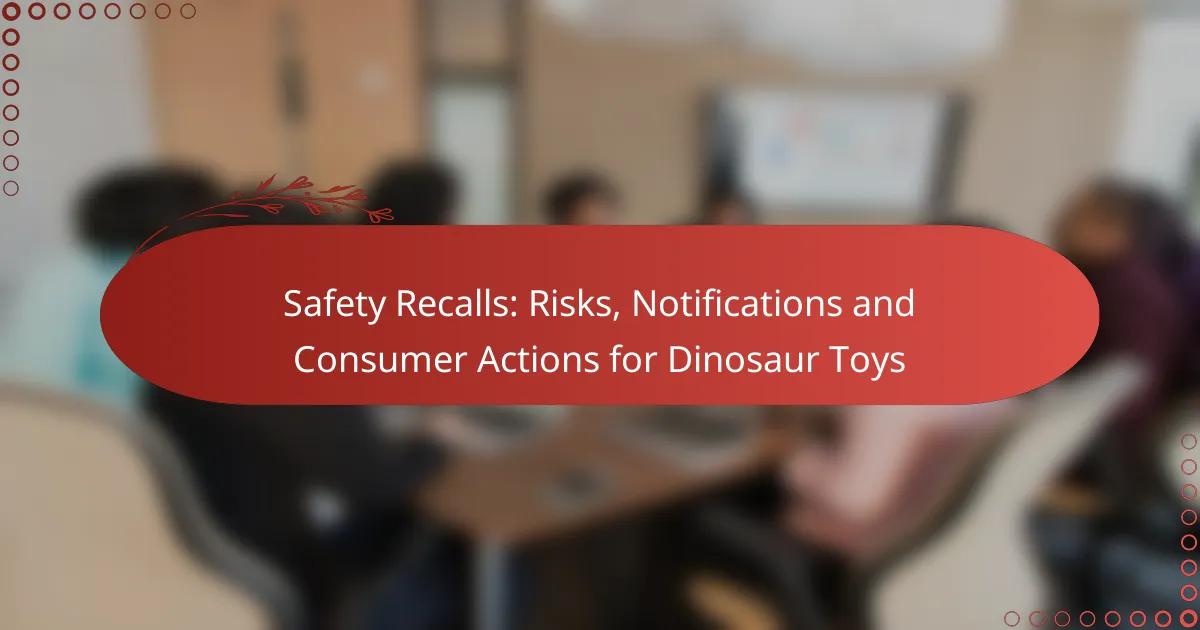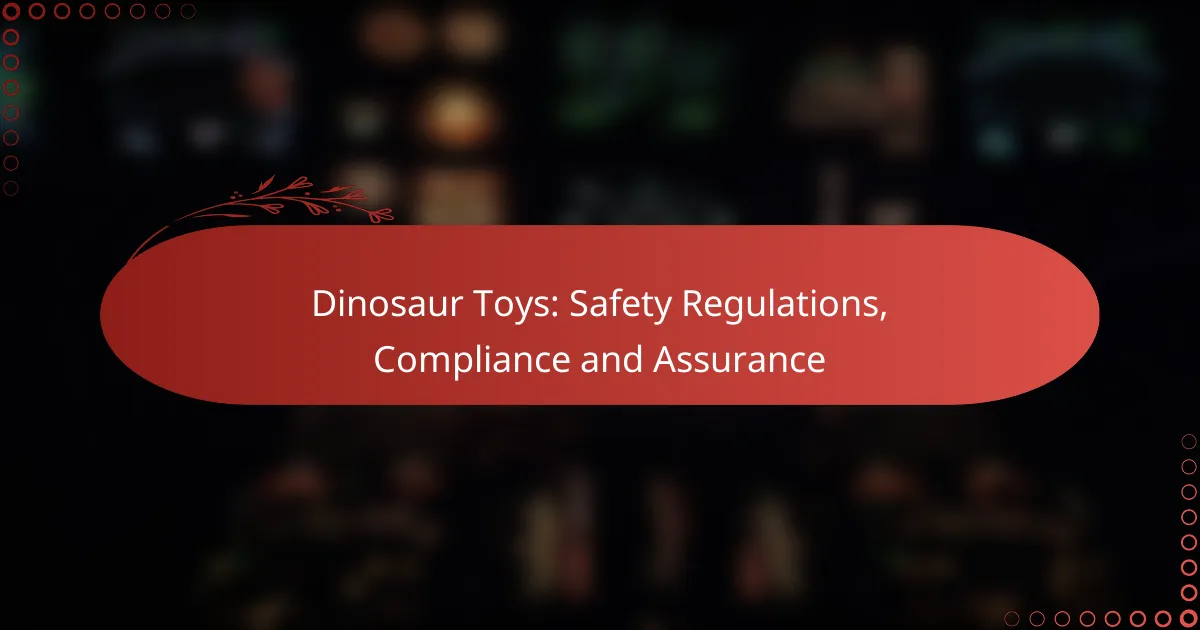Dinosaur toys can provide hours of imaginative play for children, but safety should always be a priority for parents. In the US, these toys must comply with strict safety standards, including ASTM F963 and CPSC regulations, to minimize risks such as choking hazards and exposure to toxic materials. By being vigilant about safety certifications and product reviews, consumers can make informed choices that ensure safe play for their little ones.
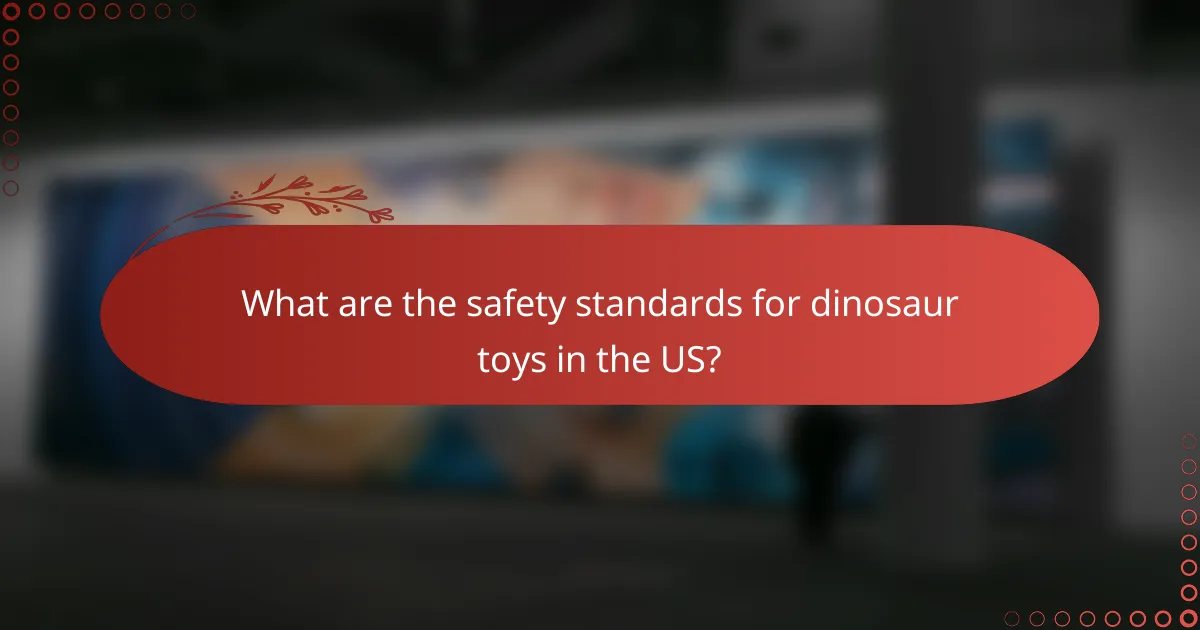
What are the safety standards for dinosaur toys in the US?
In the US, dinosaur toys must adhere to specific safety standards to ensure they are safe for children. These standards include compliance with ASTM F963 and CPSC regulations, which cover various aspects of toy safety, including material safety and potential hazards.
ASTM F963 compliance
ASTM F963 is a standard that outlines safety requirements for toys intended for children under 14 years old. It includes tests for mechanical and physical properties, flammability, and toxic elements. Dinosaur toys must pass these tests to be considered safe for use.
Manufacturers should ensure that their products are tested by accredited laboratories to confirm compliance with ASTM F963. This compliance helps protect children from choking hazards, sharp edges, and harmful chemicals.
CPSC regulations
The Consumer Product Safety Commission (CPSC) enforces regulations that govern toy safety in the US. These regulations require that all toys, including dinosaur toys, be free from hazardous substances and meet safety labeling requirements. Compliance with CPSC regulations is mandatory for all toy manufacturers.
Parents should look for labels indicating compliance with CPSC standards when purchasing dinosaur toys. This ensures that the toys have undergone necessary safety evaluations and are suitable for children.
Material safety guidelines
Material safety guidelines focus on the types of materials used in the production of dinosaur toys. Toys should be made from non-toxic, durable materials that can withstand wear and tear. Common safe materials include high-quality plastics and natural rubber.
When selecting dinosaur toys, consumers should avoid products made from PVC or other potentially harmful materials. Checking for certifications or safety marks can help ensure that the toys meet material safety guidelines.
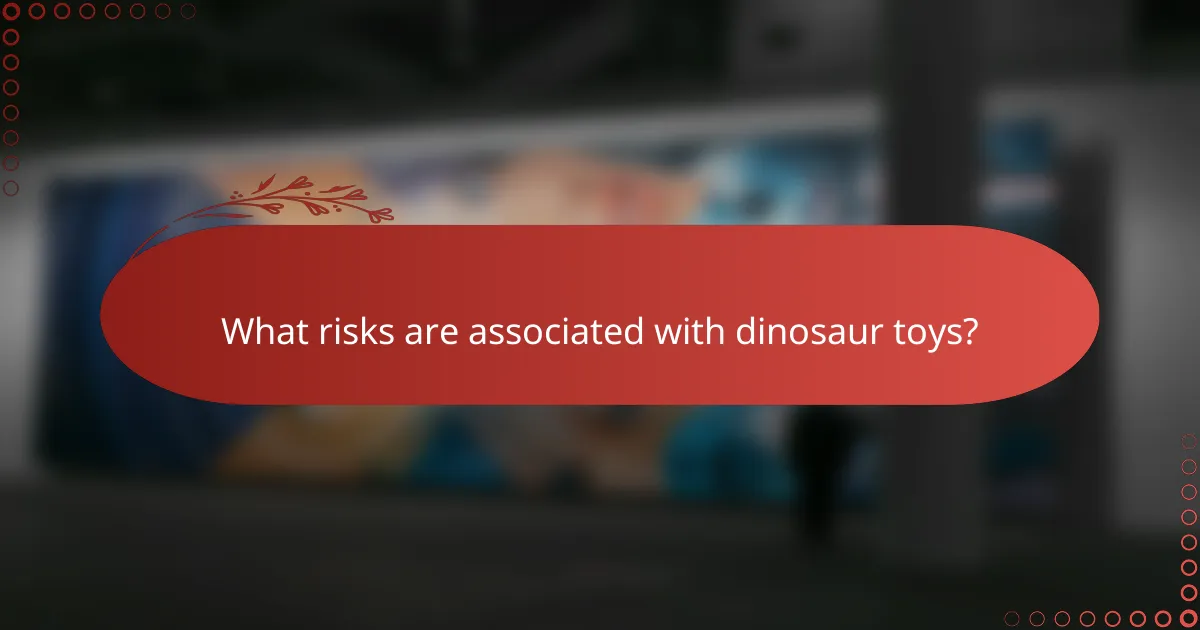
What risks are associated with dinosaur toys?
Dinosaur toys can pose several risks, including choking hazards, exposure to toxic materials, and injuries from sharp edges or small parts. Parents should be aware of these risks to ensure safe play for their children.
Choking hazards
Choking hazards are a significant concern with dinosaur toys, especially for younger children who may put toys in their mouths. Small parts that can detach from the toy, such as accessories or limbs, can easily become choking risks.
To minimize this risk, always check the age recommendations on the packaging. Toys designed for children under three years old should not contain small parts, and it’s wise to supervise playtime for younger kids.
Toxic materials
Toxic materials in dinosaur toys can include harmful chemicals such as phthalates and lead, which may be present in low-quality plastics. These substances can pose health risks if children chew on or ingest parts of the toy.
To ensure safety, look for toys that comply with safety standards, such as those set by the Consumer Product Safety Commission (CPSC) in the U.S. or equivalent regulations in your country. Opt for brands that provide transparency about their materials and manufacturing processes.
Sharp edges and small parts
Sharp edges and small parts can lead to cuts or injuries during play. Some dinosaur toys may have pointed features or rough edges that are not safe for children, particularly those who are prone to rough play.
Inspect toys for any sharp edges before giving them to children. If a toy has small parts, ensure it is appropriate for the child’s age group and supervise play to prevent accidents. Regularly check for wear and tear that could expose sharp edges or break parts off.
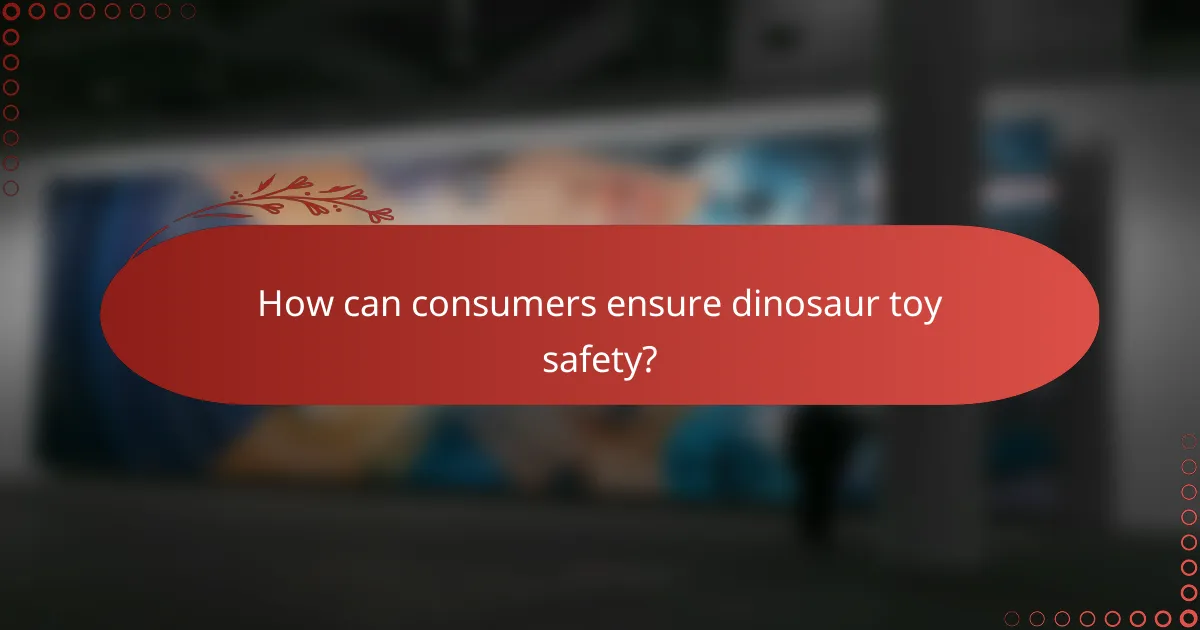
How can consumers ensure dinosaur toy safety?
Consumers can ensure dinosaur toy safety by actively checking for safety certifications, reading product reviews, and inspecting packaging for warnings. These steps help identify toys that meet safety standards and are suitable for children.
Check for safety certifications
Look for toys that have been certified by recognized safety organizations, such as ASTM International or the Consumer Product Safety Commission (CPSC) in the United States. These certifications indicate that the toy has undergone rigorous testing for safety.
In Europe, ensure that the toy carries the CE mark, which signifies compliance with health, safety, and environmental protection standards. Always verify that the certification is current and relevant to the specific toy you are considering.
Read product reviews
Product reviews can provide valuable insights into the safety and quality of dinosaur toys. Check multiple sources, including online retailers and parenting forums, to gather a range of opinions.
Pay attention to comments about safety issues, such as small parts that could pose choking hazards or materials that may be harmful. Look for toys with consistently high ratings and positive feedback regarding safety features.
Inspect packaging for warnings
Before purchasing, examine the packaging for any safety warnings or age recommendations. Manufacturers often include important information about potential hazards, such as choking risks for small parts.
Ensure that the toy is appropriate for the child’s age group, as toys designed for older children may contain components unsuitable for younger kids. Always adhere to the manufacturer’s guidelines to minimize risks.

What are your consumer rights when purchasing dinosaur toys?
When purchasing dinosaur toys, consumers have specific rights that ensure their safety and satisfaction. These rights include receiving safe products, the ability to return items, and the option to report any unsafe toys to authorities.
Right to safe products
Consumers have the right to expect that dinosaur toys meet safety standards. This means that toys should be free from hazardous materials and should not pose choking hazards or other risks to children. Always look for safety certifications, such as those from ASTM or EN71, when selecting toys.
Before purchasing, check for labels indicating compliance with safety regulations. If a toy is recalled due to safety issues, retailers are obligated to inform consumers and remove the product from shelves.
Right to refunds and returns
Consumers can return dinosaur toys that are defective or not as described. Most retailers offer a return policy that allows for refunds or exchanges within a specified period, often ranging from 30 to 90 days. Keep receipts and packaging to facilitate the return process.
Be aware of the retailer’s specific return policy, as some may have stricter guidelines regarding opened items or clearance products. Understanding these terms can help avoid disappointment if a toy does not meet expectations.
Right to report unsafe products
If you encounter a dinosaur toy that seems unsafe, you have the right to report it to relevant authorities, such as the Consumer Product Safety Commission (CPSC) in the United States. Reporting unsafe products helps protect other consumers and can lead to investigations or recalls.
Document any issues with the toy, including photographs and descriptions, to support your report. You can also share your concerns with the retailer, as they may take action to address the problem and improve safety standards.
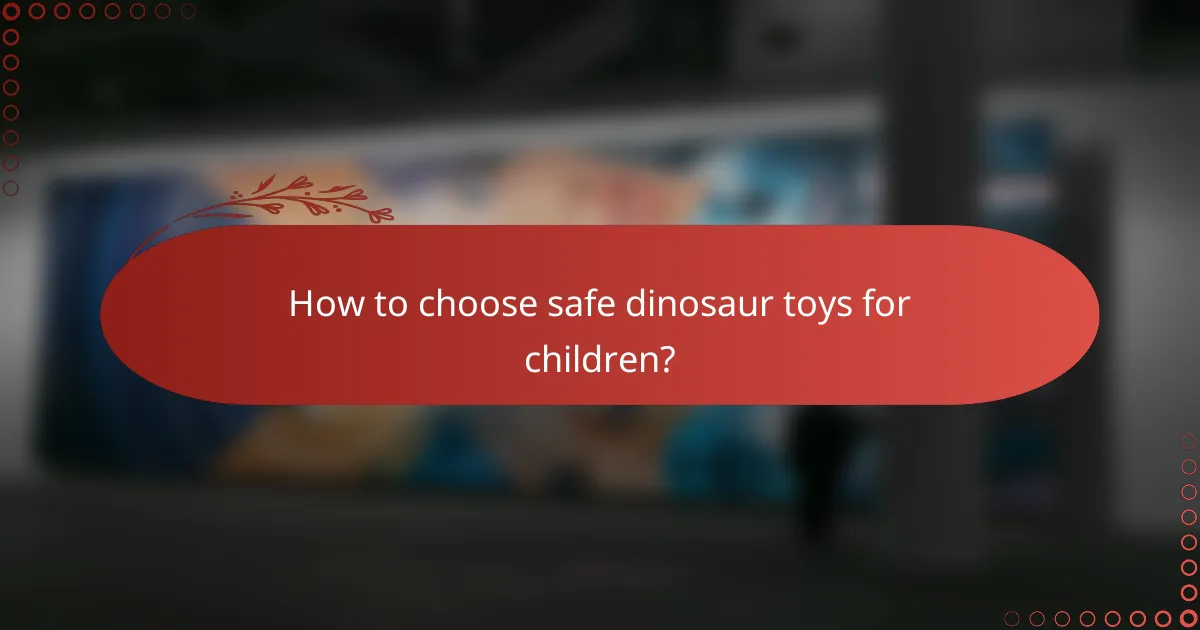
How to choose safe dinosaur toys for children?
Choosing safe dinosaur toys for children involves considering age appropriateness, brand reputation, and the materials used in the toy’s design. Ensuring these factors can help minimize risks and enhance the play experience for kids.
Age-appropriate selections
Selecting dinosaur toys that are suitable for a child’s age is crucial for safety. Toys designed for younger children should not have small parts that pose choking hazards, while older children may enjoy more complex toys that encourage imaginative play.
Check the packaging for age recommendations, which typically range from 0-3 years for soft, plush toys, and 4 years and up for action figures or models. Always supervise younger children during playtime to ensure safety.
Reputable brands to consider
Choosing dinosaur toys from reputable brands can significantly reduce safety risks. Brands that adhere to safety standards, such as ASTM or EN71, are more likely to produce toys that are free from harmful chemicals and sharp edges.
Some well-known brands include Schleich, Playmobil, and LEGO, which are recognized for their commitment to quality and safety. Researching customer reviews and safety ratings can also help in making informed decisions.
Material and design considerations
The materials used in dinosaur toys play a vital role in their safety. Look for toys made from non-toxic plastics, BPA-free materials, or natural rubber, which are safer options for children.
Additionally, consider the design of the toy. Smooth edges and sturdy construction can prevent injuries during play. Avoid toys with detachable parts that could be swallowed or inhaled, especially for younger children.
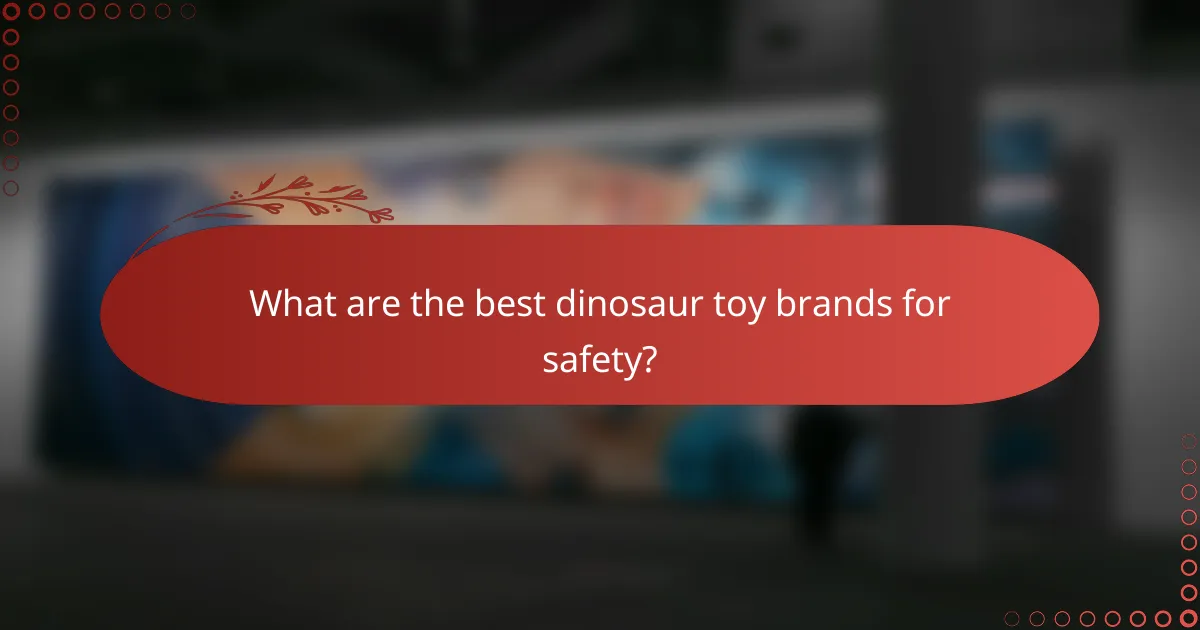
What are the best dinosaur toy brands for safety?
Some of the best dinosaur toy brands known for safety include Schleich, LEGO, and Playmobil. These brands adhere to strict safety standards and regulations, ensuring that their products are free from harmful materials and suitable for children.
Key safety standards for dinosaur toys
When evaluating dinosaur toys, look for compliance with safety standards such as ASTM F963 in the United States or EN71 in Europe. These standards ensure that toys are tested for choking hazards, toxic substances, and overall durability.
Brands that meet these standards typically provide clear labeling on packaging, indicating their compliance. Always check for certification marks before purchasing to ensure safety for your child.
Common safety risks associated with dinosaur toys
Common safety risks with dinosaur toys include small parts that can pose choking hazards, sharp edges, and toxic materials. Toys that are not well-made may break easily, creating sharp fragments that can injure children.
To minimize risks, avoid toys with small detachable parts for younger children and choose products made from non-toxic materials. Regularly inspect toys for wear and tear to ensure they remain safe for play.
Consumer rights regarding toy safety
Consumers have the right to expect that toys, including dinosaur figures, are safe and free from harmful substances. If a toy is found to be unsafe, consumers can report it to regulatory bodies and seek refunds or replacements.
Familiarize yourself with your local consumer protection laws, as they vary by country. In the U.S., the Consumer Product Safety Commission (CPSC) oversees toy safety, while in Europe, the European Commission provides similar oversight.

